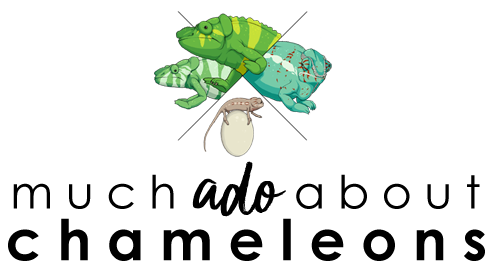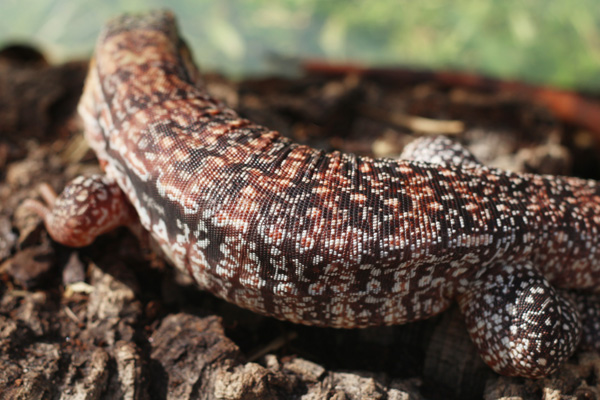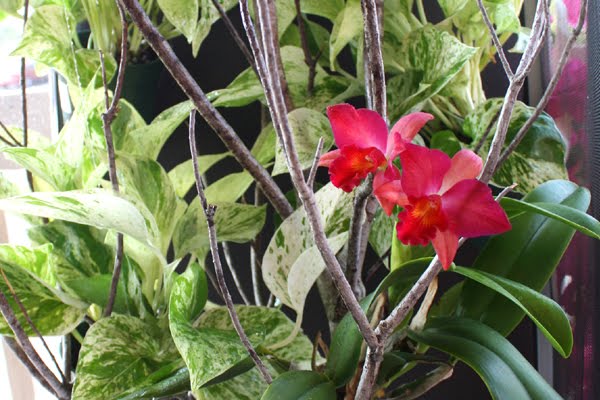 |
| Madagascar, 2017 |
W E L C O M E
I'm passionate about creating confident, capable keepers.
Much Ado About Chameleons is a blog that strives to empower keepers to truly master the care and breeding of chameleons in captivity, to make confident, informed choices for their animals, and to contribute to establishing and maintaining thriving captive populations.
Some aspects of husbandry can be confusing or overwhelming to understand – Much Ado offers information on both simple and advanced husbandry topics in a way that is clear, straightforward, and unravels these topics into their most basic parts, making it easy for anyone to understand chameleon care in a way that creates confident, empowered pet owners. There is no one-way-fits-all approach to chameleon-keeping, so we want to ensure that keepers understand what will work specifically for them and why.
Along with solid care advice and information, the blog features DIY projects, tips, product reviews, inspiring enclosures and reptile rooms worth copying, and original illustrated content, all of which make life with your pet chameleon easier and more enjoyable.
In the years since its launch, Much Ado About Chameleons has been referenced in the book Veiled Chameleons or Yemen Chameleons As Pets by Wendy Davis, various blog photographs have been published in Panther Chameleons: Color-Changing Reptiles by Rebecca Hirsch, I’ve contributed to articles on Swell UK and Chameleon Forums, I have joined the collective of authors on Reptile Apartment, and I’ve been invited to co-author a book due for publication in 2017.
There are various awesome projects in the works for the blog; follow along as we continue to grow!
M E E T M E
Hey! I’m a Spanish-born molecular biologist that subsists on a mix of Thai food and white wine that really, really, loves chameleons.
Olimpia Martinotti
O w n e r + E d i t o rI moved as a child from Madrid to the tropical city of Miami, where the sidewalks were littered with a litany of swiftly-scurrying anole lizards, the local park hosted large crocodiles basking along the shores of the canals, and emerald-green iguanas would eat the hibiscus flowers outside my bedroom window.
By the time I went to college at the Florida Institute of Technology, I had amassed years of experience with these and other exotic creatures, and despite the vociferous behest of my counselors to pursue a career in writing or illustration instead, I leapt right into a degree in biology.
In 2008 I bought my first chameleon, a little wild Jackson’s chameleon, and by 2012 I was so hopelessly in love with these animals and their intricate care that I became passionate about helping keepers and chameleons alike through education. And so I launched Much Ado About Chameleons, into which I could pour my almost 20 years of experience and background in biology and physiology, and enable keepers to understand the full depth of husbandry and reptilian health in a way that is clear and straightforward.
I currently live in Miami, Florida, again with my dog and a handful lizards, who dominate my free time when I'm not working at a commercial environmental testing lab.
Also Find Me On
Executive Editor & contributing author for Reptile Apartment
M E E T M Y P E T S
While I have owned dozens of chameleons at a time, currently my tiny 1920's Miami apartment only allows me enough room to keep a handful of pet reptiles along with my dog. Striving to keep the few I have better vs. opting to collect as many as possible, this number seems like quite enough for now.
Let me introduce them to you!
Cappuccino the Oustalet's chameleon
(Furcifer oustaleti)
Little Cappuccino is a young Oustalet's chameleon, one of the largest species in the world and quite hardy. This is an incredibly underrated species (like so many) and in acquiring him I wanted to show keepers that they should support breeders that produce captive born offspring and give this species a chance, as they make phenomenal first-time chameleons just like panthers or veileds. Cappuccino was generously donated by Grey Phoenix Reptiles

 Cilantro the veiled chameleon
Cilantro the veiled chameleon
(Chamaeleo calyptratus)
A local Miami friend reached out to me one day saying that he had gone herping in the area and had collected a few wild-caught veiled chameleons, one of which he thought would be perfect for me. I thought about it a few days and decided to take him up on his offer to give this guy a home in captivity. I was also particularly interested in showing the public that WC Florida veiled chameleons can make excellent pets as well. They are generally big, healthy, and with a little work and patience they can relax into great pet chameleons.
(Furcifer oustaleti)
Little Cappuccino is a young Oustalet's chameleon, one of the largest species in the world and quite hardy. This is an incredibly underrated species (like so many) and in acquiring him I wanted to show keepers that they should support breeders that produce captive born offspring and give this species a chance, as they make phenomenal first-time chameleons just like panthers or veileds. Cappuccino was generously donated by Grey Phoenix Reptiles

Albus the Masoala panther chameleon
(Furcifer pardalis)
Little Albus (playfully nicknamed "Bacon") is a panther chameleon is still growing into his colors. But at only 4 months old his whites, reds, and teals are already starting to peek through. As one of the most common species I felt that my little chameleon family would never be complete without this hobby staple. I want to make sure readers feel the information they see on the blog directly applies to them.
 Cilantro the veiled chameleon
Cilantro the veiled chameleon(Chamaeleo calyptratus)
A local Miami friend reached out to me one day saying that he had gone herping in the area and had collected a few wild-caught veiled chameleons, one of which he thought would be perfect for me. I thought about it a few days and decided to take him up on his offer to give this guy a home in captivity. I was also particularly interested in showing the public that WC Florida veiled chameleons can make excellent pets as well. They are generally big, healthy, and with a little work and patience they can relax into great pet chameleons.
Lito the Argentine red tegu
(Tupinambis rufescens)
I worked with a big male red tegu years ago, back in college, and I was absolutely smitten with them. Ever since, I've wanted to get my own. So when local friend and breeder Martin from The Reptile Ranch had some gorgeous little babies freshly imported from Argentina, I jumped at the chance. He helped me get set up and here we are, with my own little male tegu. This guy is completely out of my usual wheelhouse but I adore him!
Macchiato the Oustalet's chameleon
(Furcifer oustaleti)
Macchiato was found in an avocado grove here in Homestead, Florida, just a few miles south of Miami. While herping with friends, we had just started the evening and within the first 5 minutes we spotted this handsome guy near a fence line. He has been acclimating well and shows a very unusual teal coloration for this species when he is calm.
















These are beautiful Chameleons - I will have to read more about them! Read every page that you post! Your information has been very helpful to us! Many thanks for taking the time to write this blog!
ReplyDeleteThank you for the kind words, Andrea! I'm glad it's been helpful, I definitely try very hard to make this blog a good resource for chameleon keepers.
DeleteThank you for having such an informative blog !!! It was with your helpI found my veiled chameleon is a female . Also, I followed your instructions as to how to set up her nesting bin just in case she produced eggs and had to lay them. It turns out on Friday she laid 34 infertil eggs since she had not mated. Thank you again!!!!
ReplyDeleteThank you! I'm SO glad it helped you!
DeleteJust found your blog! Wow, I am so excited. I just began to explore and I have to say, I am very impressed! Please, please continue this blog. My wife and I just adopted a fully grown veiled chameleon that was (I am assuming) released into the city (if you just flipped your lid, trust me I know the feeling). A family friend found him in the road just as he was about to get run over by a car. They rescued him and then looked for someone who would adopt him on facebook. So we jumped in and started learning about him and how to make him feel safe and comfortable. Your blog is an invaluable resource. Thank you so much Olimpia!
ReplyDeleteThank you so much for the kind words! I will definitely continue to update it with new entries, I'm glad you've found it to be useful. Poor guy, he's lucky he was found and adopted!
DeleteHi Olimpia, Could you please show images of the full enclosures. Thanks Paul
ReplyDeleteHey Paul. This entry here has a photo of one of the free-ranges that the Meller's life on (they are just garage storage units from Lowe's) http://muchadoaboutchameleons.blogspot.com/2013/10/how-to-keep-mellers-chamaleon-c-melleri.html
DeleteAnd this entry has photos of screen cages that I've used for panthers and other species: http://muchadoaboutchameleons.blogspot.com/2012/04/how-to-set-up-proper-chameleon.html
Hey Olympia, I was curious how your mellers do in that Miami heat over the summer. Also, being a biology major, do you think we can breed out some of the finicky traits in this species, like the panther chameleon of today. I have had similar experiences with a medium sized wild caught and a c.b. baby. I do want to try again later, hopefully with success. I have had success with fischers and jacksons, but as you know, there is a strong fascination with this species, Just passed on a huge adult at a reptile show the other day. Good luck with possible breeding, and your career.
DeleteThey do get hot but with lots of water and shade they seem to be doing very well. Particularly for my WC, Thad, his mood has been totally different (for the better) since moving outdoors and he is now stable, healthy, and thriving.
DeleteI do believe we can get a healthy captive bred population going if a group of us are serious about keeping up standards. For example, we know that hatchlings whose eggs were laid by stressed, newly-captive moms don't do well at all. And the hatchlings that survive past 2-3 months should perhaps not even breed, not if they aren't adding strength to the lines we have here. So I think that if those of us that are breeding them strive for healthy breeding adults who are stress-free then I think the hatchlings will benefit from it. And once you get strong healthy hatchlings I think half of the battle is done for you, they will be hardier adults than those that went through the horrors of importation.
very helpful thanks
ReplyDeleteI used it for my homework =)
DeleteI am looking into getting a chameleon as my next pet, but have also herd people cautioning me against it since I will be a first time reptile owner. I will definitely be willing to put in the work, but I am unsure of how tough it really will be. Hopefully you'll give me an honest opinion on this subject, your blog has been very informative thus far. I also worry about the heat where I live in Arizona. And I will be moving in about 9 months, will that effect the animal at all? I can bring it with me, since it is a caged pet.
ReplyDeleteIt’s a really good step that you’re asking for help and doing research, chameleons get a very tough reputation because most new keepers never do this step and then don’t know what to do with their new pets. What I think scares new keepers (and is what scared me when I first started with reptiles at all) was the idea that they are so foreign, since their metabolism is totally different! So the idea of setting up lamps and regulating temperatures sounds so difficult, but it’s really not. I think 70% of the battle with chameleons is setting up the cage correctly. So if you do that long before you buy a chameleon you’ll feel much more confident that the home is safe, comfortable, and appropriate for a new little guy. If you have AC I don't think the heat should be a problem (I live in Florida, where it's usually in the 80's even at night!)
DeleteThe second place where I think new keepers find trouble is that they start with unhealthy animals, either from pet stores or rescues on Craigslist, etc. I think it’s impossible for a new inexperienced person to have good luck saving a sick chameleon, especially when it’s so hard for us who have been doing this for years to do! So always look into getting a healthy chameleon (baby or adult) from someone with good reviews and a track record of helping customers with questions. When you start off with a healthy chameleon you just have to work on maintaining that health, not trying to save them from chronic health issues. There are tons of great breeders in the country who sell really great chameleons, I would contact one of them before heading down to the local Petco.
And then regarding your move, that would be fine. I’ve moved with my chameleons several times and they do fine. Let me know if you have any other questions or need any specific advice to help you make your decision. Good luck!
It’s a really good step that you’re asking for help and doing research, chameleons get a very tough reputation because most new keepers never do this step and then don’t know what to do with their new pets. What I think scares new keepers (and is what scared me when I first started with reptiles at all) was the idea that they are so foreign, since their metabolism is totally different! So the idea of setting up lamps and regulating temperatures sounds so difficult, but it’s really not. I think 70% of the battle with chameleons is setting up the cage correctly. So if you do that long before you buy a chameleon you’ll feel much more confident that the home is safe, comfortable, and appropriate for a new little guy. If you have AC I don't think the heat should be a problem (I live in Florida, where it's usually in the 80's even at night!)
DeleteThe second place where I think new keepers find trouble is that they start with unhealthy animals, either from pet stores or rescues on Craigslist, etc. I think it’s impossible for a new inexperienced person to have good luck saving a sick chameleon, especially when it’s so hard for us who have been doing this for years to do! So always look into getting a healthy chameleon (baby or adult) from someone with good reviews and a track record of helping customers with questions. When you start off with a healthy chameleon you just have to work on maintaining that health, not trying to save them from chronic health issues. There are tons of great breeders in the country who sell really great chameleons, I would contact one of them before heading down to the local Petco.
And then regarding your move, that would be fine. I’ve moved with my chameleons several times and they do fine. Let me know if you have any other questions or need any specific advice to help you make your decision. Good luck!
I love the blogs BTW and can I use fake grass in the mesh cage and just take it out for cleaning? Also if my mesh cage is using a dripper and I spray is that to much? And can I feed my young male mealworms instead of crickets?
ReplyDeleteThank you! You certainly could, that would be fine. No, you can totally use both during the day, as long as the cage is not soaking wet all day, every day. You can feed mealworms as well, but I wouldn't substitute crickets out entirely. Eating a varied diet is vital to the long-term health of chameleons, so the more types of insects you can offer the better. Mealworms aren't great enough by themselves to make up 100% of the diet (for any reptile, even though gecko people think you can! lol)
DeleteHello ! You're information has been so helpful but I still have little questions. I have recently gotten my first chameleon, a veiled. I was unsure at first but after research I am am almost positive it is a female. I do not know how old she is, but I believe she's young, because she's rather small. I have all the proper food, cage and plant setups and all the environmental needs. She is still new to the place and has been timid. I have hand fed her once and all other times she's been afraid, which is expected because she's new and not use to me I suspect. I've read about females laying eggs and this is where I have questions. The cage I have is about 2.5 feet wide and 3 feet tall. Do I need a laying bin in the cage? How do I know when she is going to need to lay eggs, because I am not even sure how old she is? I've read as much as I can and I'm still just unsure about the egg laying needs and such.
ReplyDeleteThank you !!
Hi, great info and site and WOW at ur chameleons, beautiful examples and the set ups ;-) that's how its done!
ReplyDeleteGreat work im now a subscriber Keep it up :)
I just want to start by saying that I'm sorry about your beautiful Mina. I came across your blog while researching about Panther Chameleon care/habitat set up. I loved your post about Hornworms. I'm waiting to get my little boy from Tree Candy Chameleon's. I live in Dallas where it's pretty humid already, but I invested in a Monsoon and aLittle Dripper for adequate water supply. I'm concerned about drainage. I have the Reptibreeze terrarium. I've seen a lot of clever DIY options to maximize drainage, but since you are so experienced with Chamies I would love your opinion!
ReplyDeleteThanks for keeping the blog going for us!
Amber
I have been on your blog for about two hours now and I love it!! It has helped me a lot with some extra information I need for my new chameleon friend. I do still have a few basic questions before my little dude comes home. There is not many people where I live that know extreme details about my questions and a some reassurance would be GREAT. Maybe you could help?
ReplyDelete